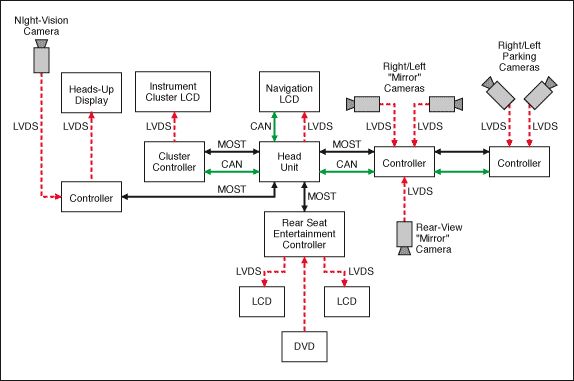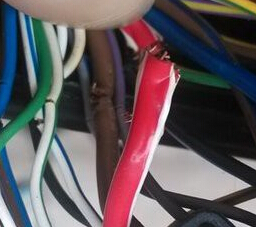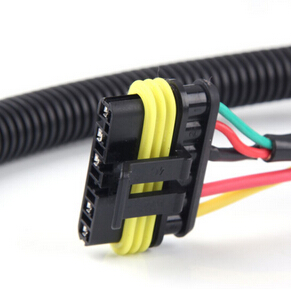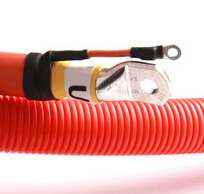First, the introduction of high-voltage wiring harness
In recent years, with the country's strong support and advance, China's new energy vehicles have made great progress in the development of a variety of new energy vehicles have been one after another into our daily life. In short, the new energy vehicles mainly refers to the use of unconventional fuel as a power source (or the use of conventional vehicle fuel, the use of new vehicle power plant), integrated vehicle power control and drive the advanced technology, the formation of technology Advanced principles, with new technology, new structure of the car. Mainly including pure electric vehicles, extended range of electric vehicles, hybrid cars, fuel cell electric vehicles, hydrogen engine cars, other new energy vehicles.
But regardless of the form of new energy vehicles, their common feature is the use of up to 300V ~ 600V or even higher voltage platform, involving wiring, and they have the same basic requirements, that is, under the electromagnetic interference protection system Safe transmission of high current and voltage. The high-voltage cable is used to connect high-voltage batteries, inverters, air conditioning compressors, three-phase generators and motors, in order to achieve power transmission. However, it should be noted that the high-voltage wiring harness is not equivalent to our daily life of high-voltage power transmission cable, only relative to the conventional low-voltage system of the car relative.

Second, the requirements of electric vehicle high voltage wiring harness
Voltage
The basic difference between conventional and conventional automotive cables is that the structure needs to be designed at 600 V rated voltage, and if used on commercial vehicles and buses, the rated voltage can be as high as 1000 V. In contrast, even higher. The cables currently used by the internal combustion engine are designed to be rated at 60 V.
The system can reduce the power loss in the transmission system (PLOSS = I2 × R) due to the use of lower current in the case where the generated power (P = U × I) is constant.
2. current
As the cable connects the battery, the inverter and the motor, the high voltage cable needs to transmit high current. Depending on the power requirements of the system components, the current can reach 250A to 450A. Such a high current in the conventional drive the vehicle is difficult to find.
Temperature
High current transmission results in high power consumption and heating of components. So high-voltage cables are designed to withstand higher temperatures. It is now possible to see a further increase in temperature requirements.
In contrast, the current vehicle usually uses the cable's rated temperature to 105 ° C is sufficient, as long as the cable is not used in the engine compartment or other high temperature resistant areas. Electric vehicle high voltage cables are usually higher than this temperature, such as 125 ° C or 150 ° C.
Electric car if the route through the negative, the OEM will even propose a higher temperature requirements. Such as the exhaust pipe near the front of the motor, the battery back and so on.
4. working life
The automotive industry typically designs a service life of 3000 h at a specified temperature rating. In the accepted cable standards (eg ISO 6722, ISO 14572), this value is usually used for long-term aging tests. In the field of high-voltage applications, the special requirements of customers may be more than 3000 h, the cumulative temperature in the specified operating time or even reached 12000 h.
5. Shield effect
The high voltage cable itself does not need to be shielded because it does not transmit data like a coaxial cable, but it is necessary to prevent or reduce the high frequency radiation generated by the switching power supply in the system from being induced by cable to the peripheral components.
Unlike the fuel-driven vehicle, it is necessary to control the three-phase alternating current of the motor of the electric vehicle. The sinusoidal voltage carrying the energy is equivalent to the square wave pulse signal of different frequencies. Since the pulses of high frequency have steep edges, a strong harmonic is generated to the surrounding area.
By using the appropriate shielding method can solve the EMI problem. In some cases, different combinations of shield types need to be used to meet the different requirements of the shielding effect.
6. Flexibility
The development of hybrid cars in many cases the challenge is that the existing series of platforms originally designed only to load the gasoline engine and its components into the space of more electrical components. Even without considering wiring, space constraints can be expected. In addition, cables and connectors also require space for routing. The usual consequence is the resulting bending radius.
Due to the inherent design of conventional cables, high bending strength is difficult to overcome. In order to solve this problem, high-voltage cable high flexibility is essential. Only the more flexible design, through the vehicle routing can be easily achieved.
7. resistant to bending
If the motor is located near the movement of the vehicle and then causes the connected high voltage cable to vibrate continuously, it is required to be designed to withstand high cyclic bending to ensure good bending endurance.
8. logo
Because high voltage increases the risk of application, various standards define high voltage cables that must be visually distinguished from ordinary automotive cables, and the specified surface must be bright orange.
At the same time can also print warning content and special markings, such as "care! High voltage 600V", high voltage lightning logo and so on.
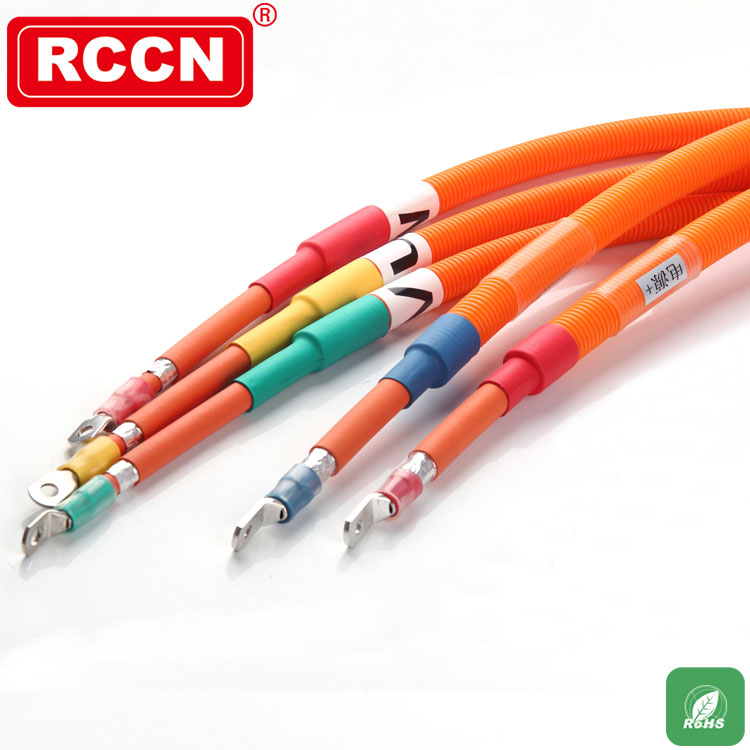
Third, the standardization of electric vehicle cable status quo
In view of the challenges and requirements of the high-voltage cables used in the above-mentioned electric vehicles, it is necessary to establish new cable standards to meet the needs of suppliers, wiring harnesses and OEMs.
International Organization for Standardization Road Vehicles Technical Committee Working Group on Electrical and Electronic Subcommittee (ISO / TC 22 / SC 3 / WG4) This work is carried out.
As can be seen on ISO 6722, the 600 V cable standard has been revised to meet the requirements of the 600V cable. Because most of its requirements are still very common, but often do not consider the special design required for high-voltage cables. ISO 14572 also made a similar revision.
The current voltage is higher than 600V high-voltage cable standardization is a task of the task force. The standard number is ISO 17195.
SAE will adjust the current high voltage (rated 600 V) specification SAE J1654 to high voltage cable requirements and cover from 600 to 1000 V rated voltage, newly created yet released standard SAE J2840 will be defined as shielded type cable.
LV is the German five car company's common procurement specifications, currently introduced the rated voltage of 600 V electric vehicle high-voltage cable standard LV 216. It covers single and multi-core shielded cables.
China's high-voltage shielded cable national automotive industry standards are being developed, the rated voltage will reach 1000 V.

Fourth, electric vehicle high voltage cable structure design
Standard products and very specific requirements are difficult to define. The purpose of this paper is to solve the basic design ideas, through the application of advanced high-voltage cable structure to overcome the above-mentioned challenges.
1. conductor design
The flexibility of high-voltage cables is mostly determined by the design of the conductor. This is why high voltage cables use special conductors with a large number of very small diameter monofilaments. A certain amount of monofilament first twisted, and then concentric twist, the formation of high-voltage cable required soft conductor.
The number of roots is another advantage that is better resistant to bending. Stranded pitch shortened, but also can improve the bending life of high-voltage cable.
2. Insulation material
The choice of insulating material is mainly to consider the heat resistance requirements and mechanical strength. Compared to the standard battery cable, you can choose a relatively soft material, so that specially designed stranded conductor to maintain flexibility.
3. into a cable
Cables are often twisted together when cores are used. In order to compensate for the deformation caused by stranded high voltage cable core, the need for the use of the so-called back twist of the special equipment. In this process, the dedicated stranding machine is equipped with a reel in the opposite direction of rotation. This is necessary to prevent the deformation of the cable tension.
According to the cable structure, usually used to fill, to ensure a high degree of concentric shielded cable, and ultimately to obtain a satisfactory high-voltage cable. The use of straps in twisted cable cores can maintain the flexibility of the cable.
4. Shielded
As a result of EMC (electromagnetic compatibility) requirements, the use of multiple copper wire composed of woven shield. Tinned copper wire can make it more resistant to environmental effects such as oxidation. With fine copper wire can maintain the design flexibility
Shields need to have a coverage of more than 90% to overcome the EMI problem described earlier.
Shielding effect of the different needs, weaving shield can be combined with other various shielding, such as aluminum plastic film. Outside the shield can be wrapped around a layer of non-woven fabrics to ensure that the assembly process easy to peel the jacket.
5. Sheath
As with the insulation of the core, the sheath material is selected according to thermal and mechanical requirements. Due to direct contact, environmental properties such as resistance to liquids and wear are particularly important for the sheath. These characteristics are mainly dependent on the type of jacket material selected, but also to a certain extent affected by the jacket structure design.
If special requirements, such as to overcome the wear of the installation vehicle environment, require increased wear resistance, which in the choice of materials need to be considered. The use of test equipment is usually used to simulate the reality of these features.
Choose a relatively soft material that benefits from flexibility, which may result in a lower wear resistance of the high voltage cable.
According to the relevant specifications, the extrusion jacket should be a bright orange, according to the provisions can also add a special warning high pressure mark.
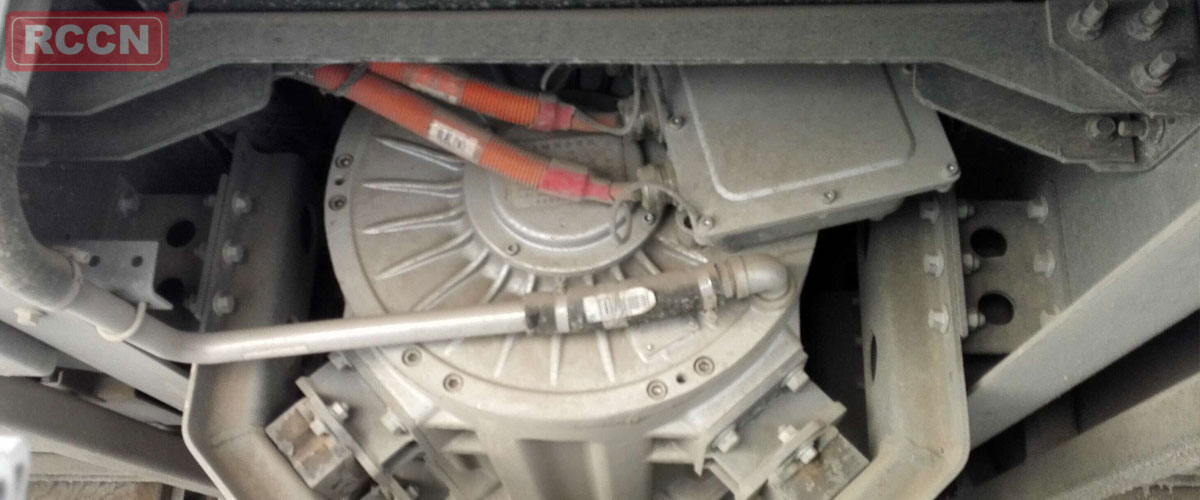
Five, summary
High-voltage wire harness as the main carrier of power output on the electric vehicle, vehicle performance and safety is one of the key components. High-voltage wire harness R & D and design not only from the vehicle point of view, but also from the raw materials, connectors, component suppliers and other aspects of the point of view, the industry standard is not yet standardized, the joint efforts to develop both The actual use of the environment, but also has a forward-looking industry uniform standards. In order to further improve the safety of electric vehicles, but also conducive to high-voltage wiring harness to reduce design and manufacturing costs, to promote the development of electric vehicles make due contributions.
















 RCCN WeChat QrCode
RCCN WeChat QrCode Mobile WebSite
Mobile WebSite

